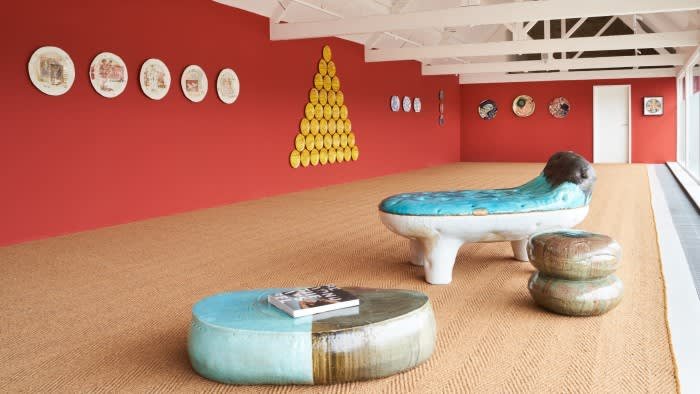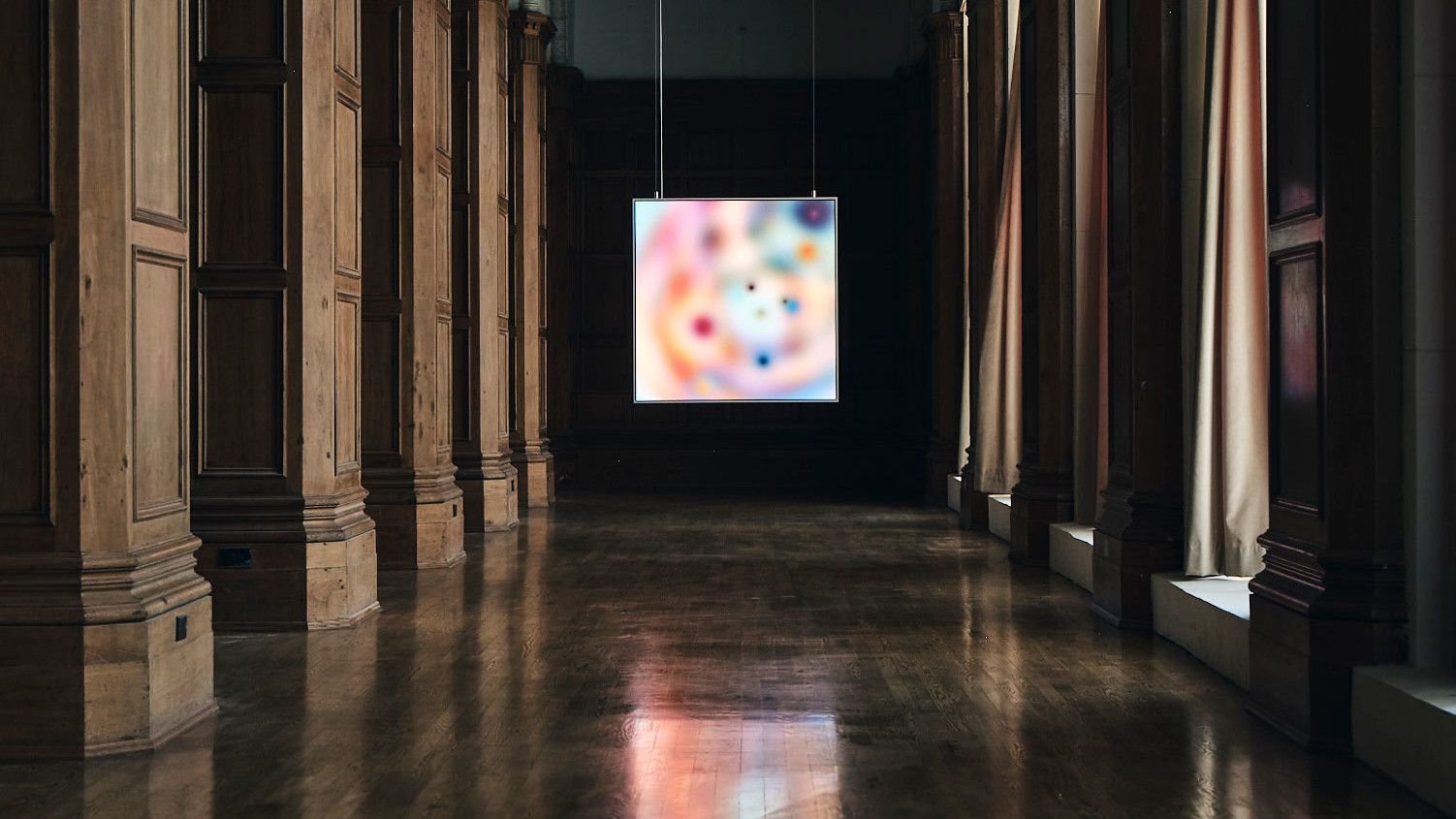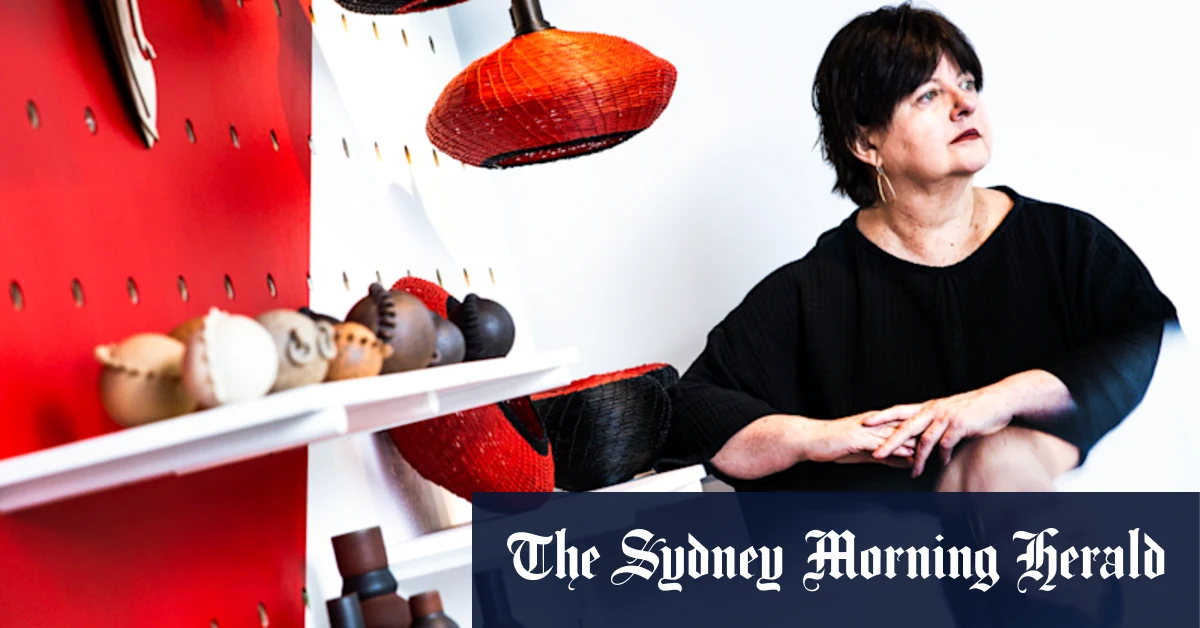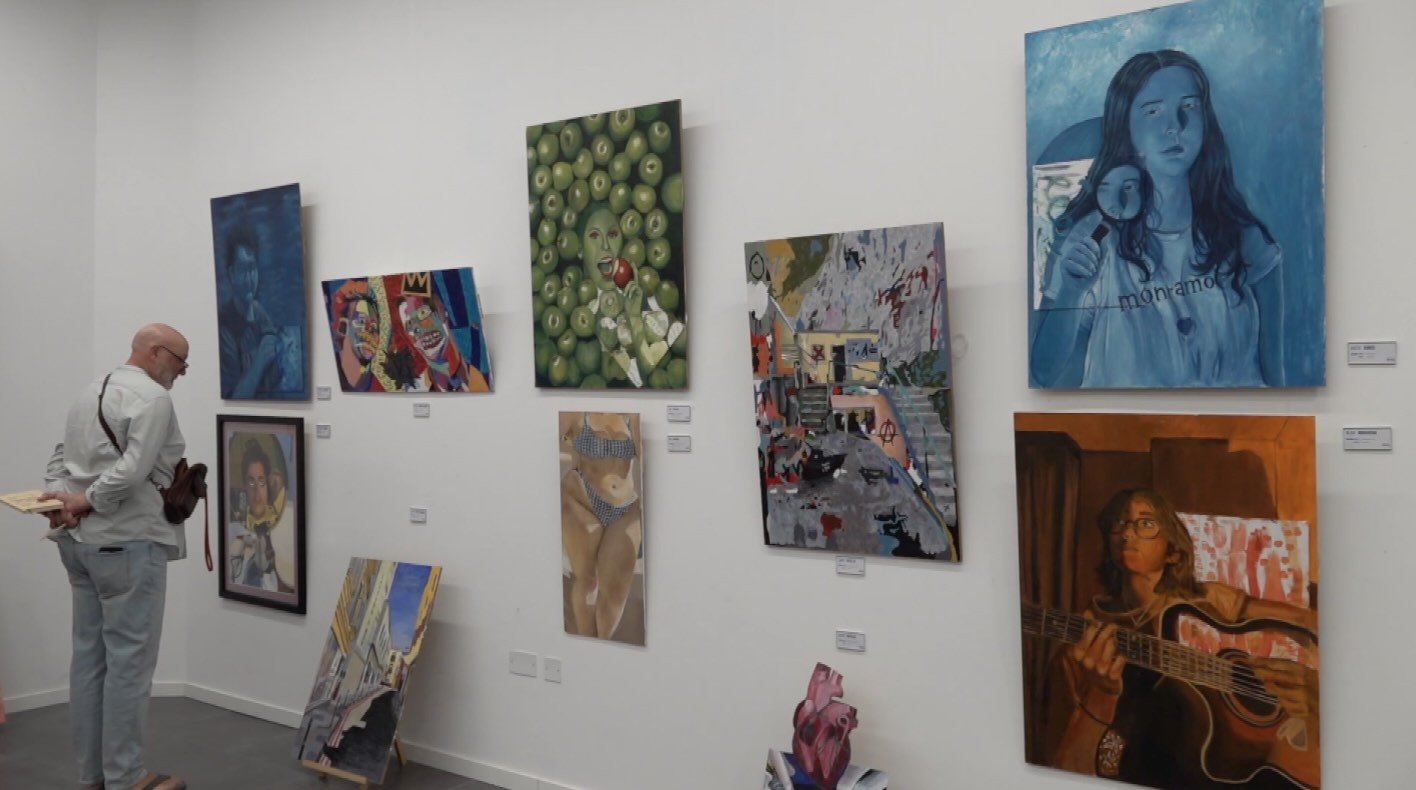The plate might seem a benign part of daily life, but its ubiquity can be a secret weapon for artists. Over the centuries, they have used its humble form and decorative glaze work to satirise wars, condemn slavery and call for social change. Plates are the “Trojan horses” of the decorative arts, says British ceramic artist Stephen Dixon. “Everyone is familiar and comfortable with ceramics, so you can seduce people with a pretty plate, then let your subversive message flow out.”
Dixon’s own dishes draw on the stories of war and migration hidden within ceramic history to comment on the realities of conflict and the refugee experience today. His work links the movement of tin-glazed earthenware from the Middle East and north Africa to the UK with the journeys of contemporary migrants.
On one of his plates in the exhibition Contem’Plate at Messums West in Wiltshire, a print of French painter Théodore Géricault’s 1819 work “The Raft of the Medusa” — showing bodies clinging to a makeshift vessel in the aftermath of a battle — is streaked with a blood-red glaze and overlays an index from a book on maiolica (Italian tin-glazed pottery). Another sees him collage a statue of the two-faced Janus — used to announce the beginning and end of war in Roman cities — with text from the Universal Declaration of Human Rights asserting everyone’s right to a state.


“I’m exploring the reality of human nature: that we are capable of great acts of altruism and beauty but acts of bestiality at the same time,” says the artist. He riffs on the istoriato wares (maiolica painted with stories) popularised during the Renaissance, which often drew on Bible stories and classical mythology to comment on contemporary issues.
Contem’Plate shows how contemporary artists are heaping the dish with new significance. “The exhibition started from the idea that empathy begins at the dinner table,” says its curator Natalie Baerselman le Gros. “It’s a place where discussions happen and problems are solved.”
Many of today’s artists toy with the plate’s decorative history and its links to industry to start conversations. Paul Scott’s “sampler” collages use details of original patterns drawn from hand-engraved copper plates in the Spode Works archives in Stoke-on-Trent. The factory closed in 2008, and his “Cumbrian Blue(s)” series at Messums West celebrates the richness of printed Staffordshire blue wares, while lamenting the loss of craft skills in the Potteries. He has also altered antique transferwares depicting a romanticised vision of Palestine by overlaying images of war-ravaged Gaza, bringing a dose of realism to the long tradition of souvenir and commemorative plates.


Our familiarity with ceramics makes the dish particularly accessible as an art form, explains Baerselman le Gros, who has also curated the fundraising show Plates with Purpose: Make for Peace as part of Messums West’s Ceramic Season to support two charities. “Everyone’s grandma has a dinner set that they bring out for special occasions,” she adds. And, as the potter Grayson Perry wrote in his autobiography, you can be as “outrageous” as you like on ceramics because “the vice squad is never going to raid a pottery exhibition”.
The plate also “disrupts the hierarchy of image-making” in western art that has historically privileged oil painting, adds Charlotte Hodes, who plays with its domestic associations to comment on the contemporary female experience.
Like Paul Scott, she has abstracted motifs from Spode Works copper engravings, splicing the hand-cut enamel transfers with her own imagery across a wall installation of seven plates at Messums. In “Leaf Flutter” (2014), a classical statue of a robed woman astride a horse — an idealised take on femininity through a male lens — is mixed with Hodes’ images of the female form floating in space, freed from societal expectations. Their figures are shadowlike, however, in a nod to the fragility of this freedom.


Porcelain plates of the 18th century often starred European palaces, carriages and waltzing couples — stories of wealth that hid a darker tale of colonialism and slavery. The New York-based artist Jacqueline Bishop subverts these narratives, bringing the Black experience to the fore.
“I love the history of telling stories on porcelain,” she says. “You can get a whole saga from looking at a piece of Sèvres, Limoges or Meissen ceramic. Gazing at them, I would get wrapped up in the story — but always as an outsider . . . As a Black Jamaican woman, I chose to work in this very white medium because I felt that it represents my sense of alienation.”
In one plate from her 2021 series “History at the Dinner Table”, she gave new dignity to a naked, menstruating girl hung up and beaten on a slave ship in a found image. “I was horrified by this picture and sought to protect the young woman by putting flowers around her,” she says.

Bishop also celebrates the market woman, the most ubiquitous figure to emerge from plantation Jamaica. “In my view, there would be no Caribbean society without her,” she explains. “Her labour and industry are what upholds the entire region.”
In Bishop’s 2023 series of cups and saucers called “Keeper of All the Secrets” — on view at Ferrin Contemporary’s exhibition, Our America/Whose America? at the Valentine Museum in Richmond, Virginia — she focuses on the market woman’s ability to use local plants to regulate women’s menstrual cycles and bring on miscarriages for those with unwanted pregnancies.
“The market woman had to be secretive in what she was doing during the period of slavery, when children that enslaved women had in their very bodies did not belong to them,” she says. With abortion still officially illegal in Jamaica and women’s rights to it being stripped from the US constitution, her story is all the more pertinent.
For the Los Angeles-based artist Adam Silverman, it’s the fabric of the plate itself that carries the message. In 2019 he began harvesting clay, wood ash and water from all 56 US states and inhabited territories, mixing it together to create a single material representing one unified place, “like it was before Europeans arrived here and introduced the idea of land ownership, then state governments and all of the borders and divisions that occurred subsequently,” he says.


The 56 plates, bowls and cups in his Common Ground project were used for meals in different US locations, each shared by 56 people, over a period of 18 months.
“Food is the most universal way to bring people together,” says Silverman. “In this project, the tableware speaks of diversity and inclusion, opening conversations.” Common Ground was acquired by The Skirball Cultural Center in Los Angeles in January, where it is still used to spark dialogue during meals.
The simple plate has a lot to say, it seems. Should conversation ever run dry at the dinner table in future, look down at your dish for inspiration.
‘Contem’Plate’ is at Messums West until April 29; messums.org
Find out about our latest stories first — follow @FTProperty on X or @ft_houseandhome on Instagram







